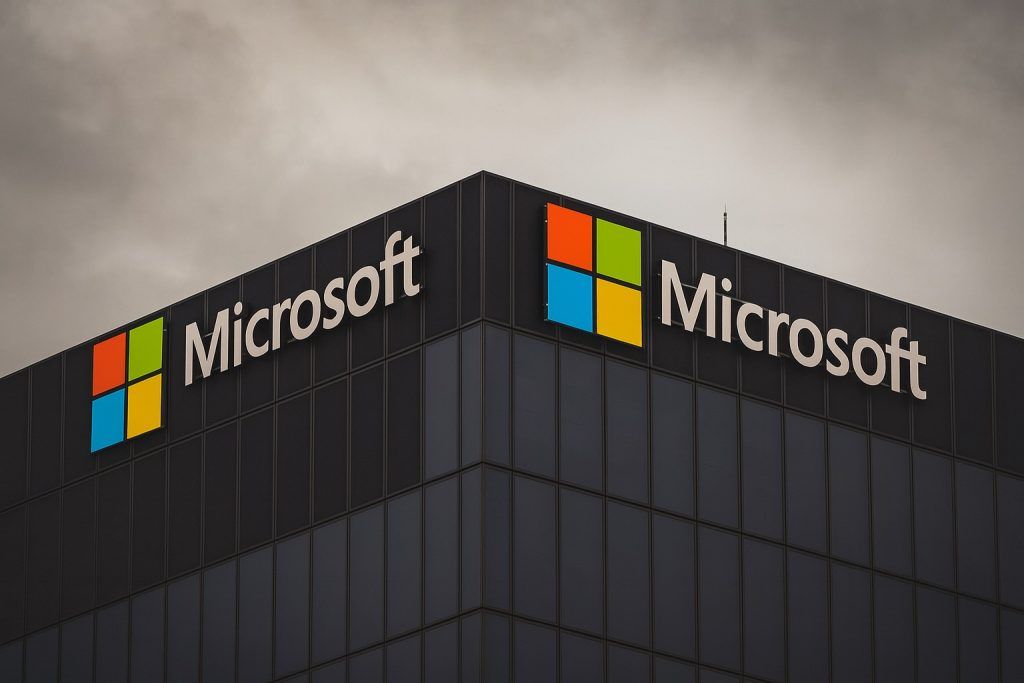- Major restructuring: On Oct. 27 Chegg (NYSE: CHGG) said it will cut 388 jobs – about 45% of its workforce – as it “adapts to the shift toward AI-powered tools” [1]. The company blamed “new realities of AI and reduced traffic from Google” for a sharp decline in student traffic and revenue [2].
- New leadership: Veteran exec Dan Rosensweig will immediately return as Chegg’s CEO, replacing Nathan Schultz (who moves to an advisory role) [3]. In a press release Rosensweig said he’s “confident Chegg has a bright future” [4], even as the company pivots strategy. The board also confirmed it will remain a standalone company (having considered a sale), believing that staying public best serves shareholders [5].
- Cost savings: The overhaul is expected to cut roughly $100–110 million in annual costs by 2026 (non-GAAP basis), at a one-time expense of about $15–19 million (mostly severance pay) [6]. These moves follow a similar 22% staff cut in May 2025 under the previous management, which Chegg said was driven by AI-related headwinds [7].
- Stock reaction: Chegg shares have been decimated in recent years (down ~86% in 2024 [8]). After the layoff news, CHGG stock actually spiked ~4% in after-hours trading on Oct. 27 (to about $1.50) [9] – though it remains near historic lows. (The shares once traded above $113 in early 2021.)
- Analyst outlook: Wall Street is skeptical. Five analysts cover CHGG and the consensus rating is “Sell,” with an average 12-month price target around $1.70 [10]. Chegg’s valuation is very low – roughly 0.4× forward sales – reflecting subdued expectations [11].
- New focus: Chegg is shifting toward a “skilling” strategy, targeting corporate training and adult learners. Its language-learning arm Busuu and AI-powered upskilling courses are projected to generate about $70 million in revenue in 2025 [12]. The company sees fast growth in these segments, but success is not guaranteed.
Massive Cuts and CEO Shakeup
Chegg’s announcement on Oct. 27 came as a shock to many in education and tech. The 388-job cut represents one of the largest reductions in its history (Chegg had only about 1,270 employees as of end-2024 [13]). CEO Dan Rosensweig – who led Chegg through its peak years – is returning to steer the overhaul, replacing Nathan Schultz. Schultz, who transformed Chegg from a textbook-rental service into a broader learning platform, was thanked for his contributions but agreed to step aside [14]. Rosensweig’s message was cautiously optimistic: “I’m confident Chegg has a bright future, and I look forward to exploring all paths to drive growth and enhance shareholder value,” he said [15].
In its press release, Chegg said it conducted a strategic review (with Goldman Sachs) and decided against a sale. The board stated that “remaining an independent public company offers the best opportunity to maximize long-term shareholder value” [16]. Nonetheless, the scope of the layoffs and added severance charges underscore how badly the company’s core business has been hit. The 2025 restructuring charges (about $15–19M) follow earlier charges of $34–38M this spring [17], all aimed at trimming $100–110M in yearly expenses by 2026 [18] [19].
AI Disruption and Education Trends
Chegg’s troubles highlight a wider AI-driven upheaval in education technology. Chegg executives specifically pointed to generative AI tools (like ChatGPT) and Google’s new AI search “summaries” as culprits. In fact, Chegg noted that Google’s AI Overviews are now giving students answers directly on the search page, which “has kept web traffic confined within [Google’s] ecosystem” [20]. Similarly, OpenAI and Anthropic are offering free chatbot access that lures students away from paid tutoring sites. As one tech news outlet put it, “students increasingly ditch traditional study platforms in favor of AI tools like ChatGPT” [21].
Meanwhile, other players are capitalizing on the AI craze. Duolingo (language-learning app) has seen its stock surge on AI partnerships, and Coursera (online courses) jumped ~31% this quarter [22]. By contrast, Chegg’s share price only rose about 18.5% in the same period [23], reflecting investor doubts about its prospects. Zacks Research notes that Chegg is now “shifting its focus from a traditional student-focused model to an advanced professional upskilling business model” [24]. The idea is to move beyond homework help into workplace training, language proficiency, and certification prep. Busuu (acquired in 2022) and new “Skills” courses are examples. However, Zacks warns this pivot carries “execution risk,” noting that long-term success will hinge on convincing professionals Chegg is “more than just a study aid” [25].
Chegg’s strategy shift comes as peers and even big tech trim headcount to chase AI gains. For example, Amazon announced on Oct. 28 that it will cut about 14,000 corporate jobs to streamline costs and fund its AI investments [26]. The message across these companies is clear: AI is reshaping industries, and businesses must adapt. Chegg’s expanded focus on AI-driven learning tools reflects this trend – it plans to integrate generative AI into its platform and convert content into personalized study assistants [27] [28]. But the immediate effect is painful: a much smaller staff and a slimmed-down operation.
Stock Plunge and Outlook
Chegg’s stock has been battered even before this announcement. After trading above $100 in early 2021, the shares have collapsed – down about 86% in 2024 alone [29] – leaving CHGG around $1–2 per share. The market had little confidence as Chegg warned of AI pressures in multiple earnings reports. (A student-designed AI tool even prompted a 48% one-day stock crash in May 2025 [30].) The Oct. 27 news surprisingly lifted the stock – Berkshire’s after-hours jump of ~4% suggests some investors cheered the aggressive cost cuts [31] – but analysts emphasize the risks ahead.
Most Wall Street analysts have a “Sell” or “Hold” rating. The consensus 12-month target is only about $1.70 [32] (about 20% above the current price), reflecting cautious sentiment. StockAnalysis.com notes 5 analysts cover Chegg and none rate it a “Buy” [33]. AI-driven forecasts offer mixed signals. One algorithmic model sees a potential 10% rise over the next 3 months (forecasting an upper range near $2.10) [34], but it also flags CHGG as “high risk” due to volatility [35].
There are glimmers of value. As Zacks points out, Chegg’s forward price/sales ratio is only ~0.4 (meaning the stock trades at less than half the sales multiple of larger edtech peers) [36]. If the restructuring stabilizes the business, the stock could be considered extremely cheap on fundamental metrics. However, the company warns in its filings that outcomes are uncertain – new initiatives must attract learners and offset the revenue loss from disappearing Q&A sales [37]. In short, experts say Chegg’s future depends on execution. CEO Rosensweig is betting on Chegg’s content and AI mix, but as one analyst puts it, the company must prove it can be “more than just a study aid” for students and professionals alike [38].
Sources: CNBC (via aggregator) and Reuters news on Chegg’s cuts [39] [40]; Chegg press releases [41] [42]; financial news outlets (Fox Business, Benzinga) [43] [44]; TS2 Tech and Nasdaq (Zacks) analyses [45] [46] [47] [48]; Chegg investor data and SEC filings [49]; Amazon layoff report [50].
References
1. www.reuters.com, 2. www.reuters.com, 3. www.reuters.com, 4. www.stocktitan.net, 5. www.stocktitan.net, 6. www.foxbusiness.com, 7. www.reuters.com, 8. www.reuters.com, 9. www.benzinga.com, 10. stockanalysis.com, 11. www.nasdaq.com, 12. www.stocktitan.net, 13. www.reuters.com, 14. www.stocktitan.net, 15. www.stocktitan.net, 16. www.stocktitan.net, 17. www.reuters.com, 18. www.foxbusiness.com, 19. www.reuters.com, 20. www.reuters.com, 21. techstartups.com, 22. ts2.tech, 23. ts2.tech, 24. www.nasdaq.com, 25. www.nasdaq.com, 26. www.reuters.com, 27. www.chegg.com, 28. www.chegg.com, 29. www.reuters.com, 30. www.chegg.com, 31. www.benzinga.com, 32. stockanalysis.com, 33. stockanalysis.com, 34. stockinvest.us, 35. stockinvest.us, 36. www.nasdaq.com, 37. www.stocktitan.net, 38. www.nasdaq.com, 39. www.reuters.com, 40. www.reuters.com, 41. www.stocktitan.net, 42. www.stocktitan.net, 43. www.foxbusiness.com, 44. www.benzinga.com, 45. ts2.tech, 46. www.nasdaq.com, 47. www.nasdaq.com, 48. www.nasdaq.com, 49. www.stocktitan.net, 50. www.reuters.com







